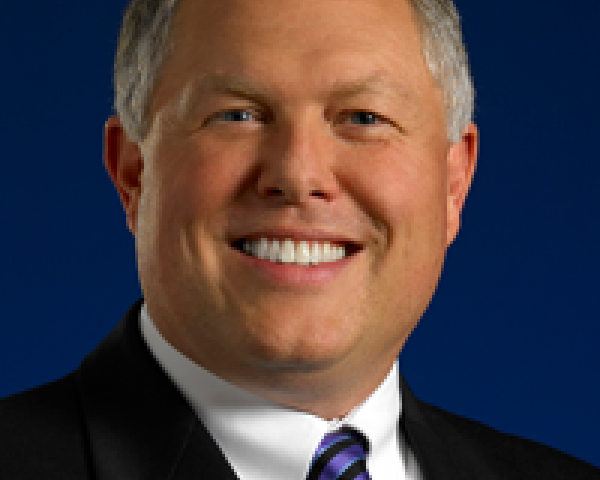Getting the best outcomes for injured workers involves much more than just treating the actual injury. Their recoveries depend on a variety of additional factors; such as whether they have access to healthy food and clean water, their ability to travel to medical appointments and the extent of support they have.
Increasingly, workers’ compensation payers are finding that these social determinants of health (SDoH) have a significant impact on the healing process and a worker’s ability to return to work. While these issues may not be a direct responsibility of stakeholders, addressing them to whatever extent possible can vastly improve and expedite the process.
Many of us already do this when catastrophic injuries are involved. We believe SDoH could and should become a critical review of a workers’ compensation claim as a way to improve overall health and well-being among the workforce and create better medical outcomes.
Two experts were on hand for our most recent Out Front Ideas webinar to provide their insight and outline strategies the industry can take to influence SDoH factors:
- Darin Hampton, regional recovery coordinator for International Paper
- Maggie Alvarez Miller, senior manager of client service management for Mitchell
Defining SDoH
SDoH is not a new topic. Within the healthcare system, stakeholders began implementing programs 20 years ago to address the structural determinants and conditions in which people live, work and age. We included SDoH in this year’s Issues to Watch because we believe there is a significant opportunity in the workers’ compensation system to address these in the claims process.
SDoH includes multiple categories, such as:
- Economics. Does the person have a stable income? Does he or she have enough money not only for his medical needs but to care for his or her family?
- Environment. What is his neighborhood like? Is it safe?
- Transportation. Can the worker get to and from work? What about travel to his medical appointments? Can he or she drive? If not, does he or she have other options, such as public transportation?
- Nutrition. Can the injured worker access quality food and clean water?
- Support. Does the worker have a network of family and friends who can help? Social isolation and community connections are imperative in a person’s ability to recover from an injury or illness. In fact, within Medicare and Medicaid there is a realization that a person who is not engaged in his or her community is more likely to have a readmission.
- Culture. Is there a discriminatory attitude toward the person in his or her living area or within the medical community?
- Understanding. An injured worker needs a basic understanding of what he or she needs to do to facilitate his recovery. Managing chronic conditions, for example, is crucial, along with taking medications as prescribed.
All these and other factors come into play in how well an injured worker recovers and returns to work. How an organization addresses SDoH depends on the company, the culture and the worker himself.
See also: How to Embrace Workforce Flexibility
Employees of International Paper, for example, typically work in remote areas, where paper mills are likely to be. Also, many of its workers are older. That creates challenges in trying to ensure they have access to medical providers, quality food and water and a network of support.
What’s Happening
The workers’ compensation system could benefit from programs that some health plans and health systems have implemented to help connect patients to appropriate resources in the community.
RWJ Barnabas, a New Jersey-based healthcare provider network, addressed the low levels of nutritional and health literacy in one area by creating a farmer’s market and community garden.
In several major cities, health systems invest in apartments for patients whose current living environments may not be adequately equipped to fulfill their needs. They also augment the new housing with nutrition classes and provide caregivers to help improve overall health.
Kaiser Permanente is developing a system that will allow patients and caregivers to "click" and get referrals to community providers of nutrition, transportation and other resources. The idea could translate to the workers’ compensation system by allowing claims team members and clinicians to identify services that could help an injured worker, for example, get healthy foods from a local deli.
Literacy
Understanding the healthcare system and, especially, the workers’ compensation process increases an injured worker’s engagement in his own recovery. Many employees have little or no idea how these function.
Improved communication is a key to creating more understanding among injured workers. Companies that operate multiple facilities away from corporate headquarters can be challenged when a worker suffers an injury and has many questions. Training front-line supervisors on all aspects of workers’ compensation goes a long way to address the lack of understanding. When an employee gets injured on the job, a trained supervisor can direct him to appropriate treatment and address any concerns he has.
Internal websites are another way companies help injured workers access information about their claims. Workers can see information such as when their next medical appointment is scheduled and when their next payments will be made.
The knowledge — or lack thereof — among employees may be such that they are unaware of basic healthcare services. For instance, they may never have had an MRI and do not know what to expect.
Case managers are in a position where they can work with the injured worker to help him or her make the best medical decisions. The managers can also prevent complications. A person who has comorbid conditions may not realize the impact those can have on recovery.
Truly helping an injured worker increase his or her health literacy involves more than just informing; it requires gaining an understanding of what is and is not understood and explaining it in a way that makes sense.
Culture
According to panelists, cultural differences have a tremendous impact on a worker’s recovery. This involves much more than just language. The perception of authority in some cultures can also affect how a person deals with the injury and recovery. In Hispanic and Filipino cultures, the fear of losing one’s job can be such that the person does not report an injury.
Cultural understanding among employers, payers and other stakeholders can help alleviate certain challenges that may arise and speed recovery. Having the injured worker partner with someone who is trained to understand cultural diversity can go a long way.
Some companies have "employee advocates" assigned to work one-on-one with the injured worker. The advocate is the first point of contact and makes it clear that he or she is there to work for the injured worker’s benefit. Having that person available to respond to questions and concerns can also go a long way in preventing the injured worker from seeking an attorney.
The advocate may steer the worker to outside resources that address health issues aside from the injury, such as smoking — directing him or her to a smoking cessation program — or obesity. The advocate may work with the employee on ways to get his or her children to school or how to handle a confused spouse.
Whether it is an advocate from an external source or a trusted person within the injured worker’s own company, the idea is to address all the employee’s concerns in a holistic way. Tapping into appropriate community resources and ensuring the worker understands and uses all applicable benefits available can break down some of the cultural challenges and address literacy issues.
Cultural competencies within the claims team is vitally important to align with the needs of the workforce. Whether it’s a matter of age, religion, geography or whatever differences workers have, those handling the claims should be trained on diversity and be adept at how cultures differ and ways they affect recovery.
Applications for Workers’ Compensation
An injured worker had a malfunctioning well, leaving him without an adequate supply of clean, accessible water. International Paper considered the problem and ended up paying $3,000 for a new well pump. While such a purchase would seem way outside the bounds of normal workers’ compensation expenditures, the company reasoned it would allow the worker to stay in his home and recover, rather than having to go to a rehabilitation facility at an estimated cost of $30,000. The employee healed and returned to work, which the company considered a win for everyone involved. That is just one example of how SDoH factors can affect a claim and how paying for something on the front end saves suffering, time and money for the worker and the employer.
See also: Insurance 2030: Scenario Planning
Another example is a case in which the worker was rendered a paraplegic and unable to return to his double-wide trailer. By purchasing a new home, the worker was able to return to his community, where he was close to healthcare and a supportive community. Again, a better outcome and lower costs were achieved.
It is not unheard of for employers/payers to purchase homes for injured workers. What may seem like an unreasonable expense ends up saving money and improving outcomes in the long run. But it’s not only catastrophic claims that have underlying SDoH that should be considered.
Looking at an injured worker holistically and considering his or her overall situation can prevent "creeping catastrophic" claims. A claim that initially seems routine may become complex when SDoH factors are involved.
As our speakers told us, it comes down to communicating with injured workers at the beginning of a claim and identifying those with circumstances that could affect recovery and drive costs, then figuring out how to tackle them.
A good way to begin is to start small. Look at individual items on a claim, such as obesity and food, and find appropriate resources. Or, if an injured worker is socially isolated, provide a home-health caregiver to meet with the person. The injured worker who has transportation problems may need extra money for a bus pass to get him or her to medical appointments. These are small ways that payers can make a difference on these claims.
Assessing claims early on to identify these and other issues is imperative. There are forms to help, such as those available on the American Academy of Family Physicians’ website. The organization has a variety of tools to help assess SDoH so stakeholders can mitigate them.
While it is not possible to hire a perfect workforce, organizations are increasingly finding creative ways to maintain a healthy workforce and help those who become injured or ill. Some are finding apps that can address various SDoH; in others, HR departments are evolving their benefits because of the unique needs of their workers.
One of the questions we were asked during the webinar is how to identify SDoH without violating a worker’s privacy. As Maggie Alvarez Miller explained, supervisors can ask open-ended questions. Let workers tell you what issues they are having and how the employer may be able to help. Also, nonverbal cues and body language might be a signal to try to engage the worker. At the very least, the HR person or supervisor can discuss her suspicions with a nurse case manager or other medical provider.
Finally, having a dedicated employee advocate can be a way to let the worker feel comfortable and open up about issues that might impede recovery. The advocate may also pick up cues from the injured worker’s environment, such as expired food in the refrigerator.
Some injured workers are concerned about their abilities to perform their normal home-life activities, especially if a spouse or others expect them to undertake tasks such as cooking and cleaning. The worker may fear his or her inability to do so will cause stress for other family members.
An injured worker in such a situation could benefit from a discussion with an employee advocate, nurse case manager or other person about how to address the issues with the family and then bring family members into the conversation. Spouses or children may not be aware of how the worker is feeling and, on hearing, may be willing to help out. Additionally, there may be outside resources that can be brought in to assist for the short term.
To listen to the full Out Front Ideas webinar on this topic, click here.








